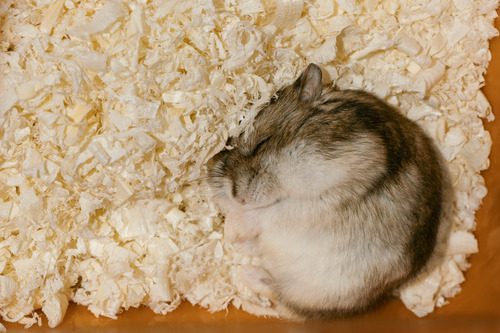How Long Do Hamsters Hibernate For?
When temperatures drop and the days get shorter, it’s not just bears who prepare for a long winter’s sleep. Hamsters, too, can enter a state known as hibernation, though in their case, it’s more accurately referred to as torpor. This natural process can be puzzling and even concerning for pet owners, especially when it’s hard to tell if your pet is hibernating or if something else might be wrong. In this blog, we’ll explore the fascinating world of hamster hibernation, providing you with all the knowledge you need to understand and support your little friend during these cooler periods. If you have any concerns about your pet’s health or behavior, call Animal Family Veterinary Care Center at (563) 391-9522.

What Triggers Hibernation in Hamsters?
Hamster hibernation is primarily triggered by changes in temperature and light. As winter approaches, the reduced daylight hours and lower temperatures can lead your hamster to believe it’s time to conserve energy. In the wild, this behavior helps them survive periods when food is scarce and the environment is harsh. Domestic hamsters might show similar behaviors even though they live in a controlled environment. It’s important to monitor your home’s temperature and lighting to help manage your pet’s hibernation cycles effectively.
How to Recognize Hibernation Signs
Recognizing the signs of hibernation in hamsters is crucial for ensuring they are healthy and not suffering from other ailments. During hibernation, hamsters will exhibit significantly reduced activity levels, slower breathing, and lower heart rates. They may also curl up into a ball and feel cooler to the touch. Unlike deep sleep, during hibernation, your hamster might be less responsive to external stimuli. If you notice these signs, it’s important to keep a close eye on your pet and ensure they are safe and not in distress.
Creating a Safe and Comfortable Environment
To manage your hamster’s hibernation effectively, ensure that their habitat is warm and comfortable. Keeping the room at a steady temperature above 65 degrees Fahrenheit can prevent your hamster from entering hibernation. Additionally, make sure they have plenty of bedding to burrow into and feel secure. It’s also crucial to continue providing fresh food and water, as hamsters will occasionally wake from their torpor to eat and drink.
When to Contact a Veterinarian
While hibernation is a natural process, it can sometimes mask or resemble symptoms of illness. If your hamster’s behavior changes drastically or if they remain in a state of torpor for an extended period, it might be time to seek professional advice. Contact Animal Family Veterinary Care Center at (563) 391-9522 if you notice any of the following:
- Prolonged inactivity
- Difficulty waking your pet
- Any signs of distress
Our team is here to provide guidance and care to ensure your hamster remains healthy throughout the colder months.
Maintaining Hamster Health Through Observation and Care
Hamster hibernation is a natural and fascinating behavior, but it requires careful observation and management to ensure it does not compromise your pet’s health. By understanding what triggers hibernation, recognizing the signs, and knowing how to properly care for your hamster during these periods, you can help them navigate this process safely. Remember, if at any point you are unsure or concerned about your hamster’s health during hibernation, a quick call to your veterinarian at Animal Family Veterinary Care Center can provide you with peace of mind and professional support. Let’s keep our little companions happy and healthy all year round!
Recent Posts
About Us
Animal Family Veterinary Care offers an extensive range of services all in one place, so we can meet your pet’s needs in almost every situation. Our veterinarians in Davenport treat dogs and cats because every pet is unique and important.